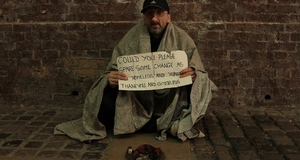Featured Article:Minorities and Homelessness in the United States and Europe: A Comparative AnalysisDurable InequalityTilly looks at why categories, in particular racial categories, still determine how our society is organized, whereby we see different sets of categories of people (external categories) divided by race, gender, religion, or citizenship status, associated with different levels of access to resources (internal categories) within hierarchical organizations, which he defines broadly as corporate kin groups, households, religious sects, local communities, and any other well-bounded cluster of social relations (Tilly 1999, 10). Although he does not specifically address homelessness, homelessness amounts to a lack of resources; his approach provides scholars with a set of causal factors to research when explaining various inequalities. The association between internal and external categories is sustained by causal mechanisms of which exploitation is central; people who control access to value-producing resources and who benefit by excluding others are exploiters; when such exclusion takes place using external categorical distinctions to solve organizational problems, durable inequality persists. The main usefulness to an organization is that if internal categories are matched to external ones, lower rank resistance is less likely. These external categories, in particular race, were socially constructed for the purposes of extreme exploitation during colonialism and slavery, and now outlive their times due to the fact that they are costly to change and facilitate exploitation; because social life has organized around them, they appear natural (Tilly 1999, 74-115). Tilly argues that in understanding unequal arrangements, prejudice and attitudes are less important than are convenience, transaction costs, and contingent opportunities (Tilly 1999, 15-37). In regards to the unequal likelihood of ending up homeless among minorities, Tilly would point to structural factors such as constraints, unintended consequences, and indirect effects (Tilly 1999, 37). He attacks individual-level analyses for conceptualizing inequality in terms of individuals receiving differential rewards based on attributes such as human capital, ambition, educational credentials, gender, race, and personal connections, and for accounting for discrimination only when individual attributes are factored out (Tilly 1999, 22-31). Tilly argues that such analyses derive collective outcomes such as racial differences in poverty based on individual attributes, but fail to specify how this link is made (Tilly 1999, 23).Some scholars writing about homelessness have found similar dynamics as described by Tilly. Marcuse and Rosenheck et al. make a link between economic restructuring and the reinforcement of categorical boundaries. Marcuse argued that while victims of severe poverty and homelessness are caused by the post-Fordist transition, the identity of the victims depends on how government addresses the problem. Marcuse recognizes that the new homelessness of the 1980s does not reflect changes in the business cycle as in previous times, and that there is an overrepresentation of minorities (Marcuse 1996, 192). Marcuse attributes this to an intentional repressive/exclusionary approach to the victims of economic change in the United States, pushing them into ghettoes. He states that the post-Fordist city is highly segregated into well off and poor areas, where the wealthy decide who lives where (Marcuse 1996, 197). Ghettoization and spatial exclusion has been undertaken because it is less costly to sustain than the welfare state response. The less like the majority of the population victims are, the less likely the government is to respond with welfare. Marcuse argues that if black victims of economic change can be outcast as a group based on a history of such stigmatization, repression and segregation becomes a less costly, politically acceptable alternative (Marcuse 1996, 209). This argument is similar to Tilly’s in regards to why exploitative relationships persist. In their 1996 study on American homelessness, Rosenheck et al. show that poverty alone does not explain homelessness among blacks. Poor blacks living in cities were twice as likely to become homeless as poor whites in the same city. Also, homeless blacks were less likely to suffer from mental illness, and had stronger employment histories than whites (Rosenheck et al. 1998, 15). Rosenheck et al. argue that it is the historical legacy of discrimination that explains overrepresentation of minorities among the homeless in the U.S. While the income gap between whites and blacks may have narrowed, the wealth gap did not; blacks did not have accumulated assets because they were less likely to own homes post World War II due to discrimination. Moreover, discrimination in housing markets has kept communities segregated, and such racial and socioeconomic segregation makes a community more vulnerable to economic downturns (Rosenheck et al 1998, 14). For example, as recent as 2007, some studies were already predicting the adverse impacts the subprime mortgage crisis would have on minorities in the United States. A study conducted by N.Y.U’s Furman Center for Real Estate and Urban Policy found that majority black and Hispanic neighborhoods in New York city were more likely to receive subprime mortgages, which are defined as loans carrying an interest rate more than 3% above the federal interest rate, and which carry higher fees, penalties, and risk of foreclosure (Fernandez, 2007). These loans are made to riskier borrowers, however, this study along with others showed that subprime loans were made even when minority income levels and credit ratings were comparable to those of whites (Fernandez, 2007). Some analysts and economists at the time claimed that mortgage discrimination can’t be pinpointed directly due to variables not represented in the data such as lack of banking services in some minority communities and racial and ethnic differences in wealth (Fernandez, 2007). Risk of foreclosure is essentially risk of homelessness, and mortgage discrimination increased risk of foreclosure for minorities. Notably, this story contains the dynamics of durable inequality, because subprime lenders found it convenient to operate along categorical lines, exploiting the financial vulnerability of minorities; whether this vulnerability was real or perceived, the decision was made along categorical boundaries. These recent developments also reinforce arguments made by the Rosenheck et al. study. The Rosenheck et al. study cited Tilly and noted that although minorities have been overrepresented among the homeless, social perception has contributed to inattention to this aspect, as if it were expected and natural, leading to a lack of studies directly addressing minority pathways into homelessness (Rosenheck et al. 1998, 13). Rosenheck et al. argue that institutional interventions to address homelessness among blacks require special considerations of discriminatory institutional and structural factors (Rosenheck et al. 1998, 15-16). Particularly in regards to comparisons between the U.S. and Europe, Marybeth Shinn finds four forms of social exclusion linked to homelessness, based on: income, wealth, housing, and incarceration (in the United States). Her approach is also similar to Tilly’s. She argues that it is social policy informed by cultural practice in the U.S. and Europe that shapes levels of inequality of particular groups, by shaping access to income, wealth, jobs, and housing (Shinn, 2010). She cites a study conducted by Alesina and Glasser, who argued that the generosity of welfare programs is tied to ethnic fractionalization in a society: majorities are unwilling to pay for redistributive policies that favor minorities. In the U.S. welfare policies are less generous in states with higher percentage of blacks, and 2/3 of the gap in social spending between the U.S. and Europe is due to greater racial heterogeneity in the U.S. (Shinn, 2010). These analyses raise questions about what kinds of policies are needed to address the overrepresentation of minorities among the homeless. Tilly’s argument of making exploitation costly and inconvenient to the dominant groups is helpful here. Tilly argued that durable inequality can be challenged when the benefits from exploitation and opportunity hoarding decline and/or the costs of such exploitation increase ie. the cost of controlling a subordinated population increases (Tilly 1999, 225). According to Tilly, these changes are structural, and members of the subordinated groups are actually empowered (Tilly 1999, 227). Within the context of homelessness, there has been an increasing trend to view people who are homeless as rights claimers. Furthermore, human rights groups have also come to understand how social exclusion, human rights violations and homelessness are interconnected. They argue that violations of civil and political rights such as discrimination affect the enjoyment of socioeconomic rights such as housing. The human rights framework is complementary to Tilly’s durable inequality thesis, and human rights can alter the structures that cause and sustain durable inequality. I combine Tilly’s argument that costs and benefits need to be changed in order to change unequal set ups, and I argue that a human rights approach that links civil and political rights to socioeconomic rights is most helpful because it has the potential to achieve this by making discrimination on all levels costly for organizations and societal entities through law, and this can spill over to improving overall quality of life for minorities and reduce risk to homelessness.Continued on Next Page » Suggested Reading from Inquiries Journal
Inquiries Journal provides undergraduate and graduate students around the world a platform for the wide dissemination of academic work over a range of core disciplines. Representing the work of students from hundreds of institutions around the globe, Inquiries Journal's large database of academic articles is completely free. Learn more | Blog | Submit Latest in Sociology |


















